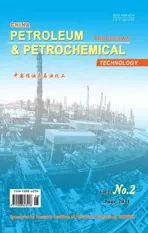Corrosion Inhibition of the Bi-enzyme Doped Epoxy Resin for Q235 Carbon Steel in Circulating Cooling Water
2021-06-29LiuFangJiangGuofeiZhaoXiaoxuanLiWeiCheYangli
Liu Fang; Jiang Guofei; Zhao Xiaoxuan; Li Wei; Che Yangli
(1 College of Chemical Engineering, China University of Petroleum, Qingdao 266580;2 State Key Laboratory of Petroleum Pollution Control, Beijing 102206)
Abstract: Carboxyl-functionalized SBA-15 (COOH/ SBA-15) was prepared by a one-pot synthesis method and characterized. COOH-SBA-15/LZM-LP, an immobilized bi-enzyme (lipase and lysozyme), was prepared using COOH/SBA-15 as a carrier. The orthogonal experiments were used to optimize the immobilization conditions with the index of corrosion inhibition. Electrochemical tests show that COOH-SBA-15/LZM-LP can significantly inhibit the corrosion of carbon steel in circulating cooling water. The corrosion inhibition rate was higher than 93% when the amount of COOHSBA-15/LZM-LP was 0.2 g/L. The inhibition mechanism was proposed and discussed from the perspective of carboxyl and enzymes. Finally, when COOH-SBA-15/LZM-LP was doped into epoxy resin, the corrosion resistance of epoxy coatings can be significantly improved, and the corrosion resistance only decreased by 0.23% after 720 h of soaking.
Key words: electrochemistry; corrosion; immobilized enzyme
1 Introduction
In order to solve the problem of corrosion caused by circulating cooling water, the common protection method is to add chemical corrosion inhibitor to the circulating cooling water. Previous studies have reported that enzymes have excellent corrosion inhibition properties on carbon steel. However, due to the special structure of the enzyme protein, free enzymes are still highly sensitive to the environment. Therefore, free enzymes must be immobilized to improve their stability and corrosion inhibition performance.
Immobilization of enzyme is mainly divided into the following aspects: the enzyme is immobilized on the surface of the carrier by adsorption, and the enzyme and the carrier can form covalent bond, cross-linked, and structured self-fixation enzyme technology, etc.[1]SBA-15 can adsorb enzymes by virtue of its strong absorption capacity, and can be used as a carrier for immobilized enzymes to maintain enzyme activity[2-3]. The surface of SBA-15 contains a large number of chemically active silanol groups, and the enzyme molecules are immobilized on the surface of the molecular sieve through physical adsorption and hydrogen bonding. Therefore, the molecular sieve can be modified by combining functional ions with active sites[4-6]to improve the immobilization effect of the enzyme. Research reports have shown that mesoporous molecular sieves modified by amino (-NH2)or carboxyl (-COOH) have a good adsorption effect on enzymes and can improve the efficiency of enzyme immobilization. After the molecular sieve is energized by amino (-NH2) or carboxyl (-COOH) species, it is then crosslinked with glutaraldehyde, and the enzyme can be immobilized by forming a covalent bond between the aldehyde group and the group of enzymes. Hence the enzyme-carrier binding is enhanced.
In the process of inhibiting corrosion, coating protection is considered to be an effective means of isolating metals from corrosive media[7]. Epoxy resin (EP) is a coating containing two or more epoxy groups in its macromolecular chain. The epoxy resin has a fine intermolecular structure, and its mechanical properties are superior to those of phenolic resins and unsaturated polyesters. However, since a single epoxy coating cannot meet the application requirements of the actual corrosive environment, various nano-fillers and additives (such as graphene, nano-clay, SiO2, ZnO, etc.) have been used to functionalize and modify epoxy resin materials[8-10].In this work, the carboxyl-functionalized SBA-15 mesoporous molecular sieve was selected as the immobilized carrier to study the corrosion inhibition properties of immobilized bi-enzyme (lipase and lysozyme) and immobilized bi-enzyme/epoxy composite coating in circulating cooling water. Orthogonal experiments were used to optimize the operating parameters of the immobilized enzyme. The polarization curve and electrochemical impedance spectroscopy were used to evaluate the corrosion resistance of the immobilized bi-enzyme and its coating.
2 Experimental
2.1 Corrosion resistance of COOH-SBA-15/LZMLP/EP
In brief, the P123 (EO20PO70EO20,Ma=5800) was dissolved in deionized water at 40 °C, and then hydrochloric acid (37%) was added under uniform stirring. After 30 min, a certain amount of TEOS and CTES was slowly added into the above solution and were further mixed for 24 h. Following this procedure,the mixture was moved into a Teflon-lined autoclave and was subject to ageing at 100 °C for 48 h. After the filtration and washing treatment procedures, the product was dried at 80 °C under vacuum conditions to get a cyano-functionallized SBA-15 (CN/SBA-15) material.To remove the template agent, the CN/SBA-15 material was dispersed into H2SO4(48%) solution prior to being refluxed at 95 °C for 24 h (Figure 1). During this process,the cyano-group (-CN) was oxidized to carboxyl group(-COOH), which ultimately resulted in the carboxyl functionalized SBA-15 material (expressed as COOH/SBA-15).

Figure 1 The synthesis mechanism diagram of COOH/SBA-15
The method of immobilizing lysozyme first and then immobilizing lipase was used to prepare the immobilized bi-enzyme. 0.1 g of COOH/SBA-15 and 0.04 g of lysozyme were dispersed in 50 mL of phosphate buffer solution (50 mmol/L, pH = 6.5) and were immobilized at 30 °C for 5 h. After the immobilization was completed,the solution was suction filtered and naturally dried for more than 12 hours. Similarly, the above sample and 0.04 g of lipase were dispersed in 50 mL of phosphate buffer solution (50 mmol/L, pH = 7.0), and were immobilized for 10 h at 30 °C. After the reaction, the free enzyme was removed by repeated filtration, and the immobilized bi-enzyme products were obtained by natural ventilation and drying. For convenience, the product was expressed as COOH-SBA-15/LZM-LP.
2.2 Optimization of operating parameters of immobilized bi-enzyme
The optimization scheme of the immobilized bi-enzyme was determined by orthogonal experiments. Lysozyme dosage, immobilization time of lysozyme, lipase dosage and the immobilization time of lipase were selected as the influencing factors. Orthogonal experiments were designed with the corrosion inhibition rate serving as an index. Five levels were selected for each influencing factor. An orthogonal table of type L25(56) was selected.The experimental factor and levels of orthogonal design are shown in Table 1.
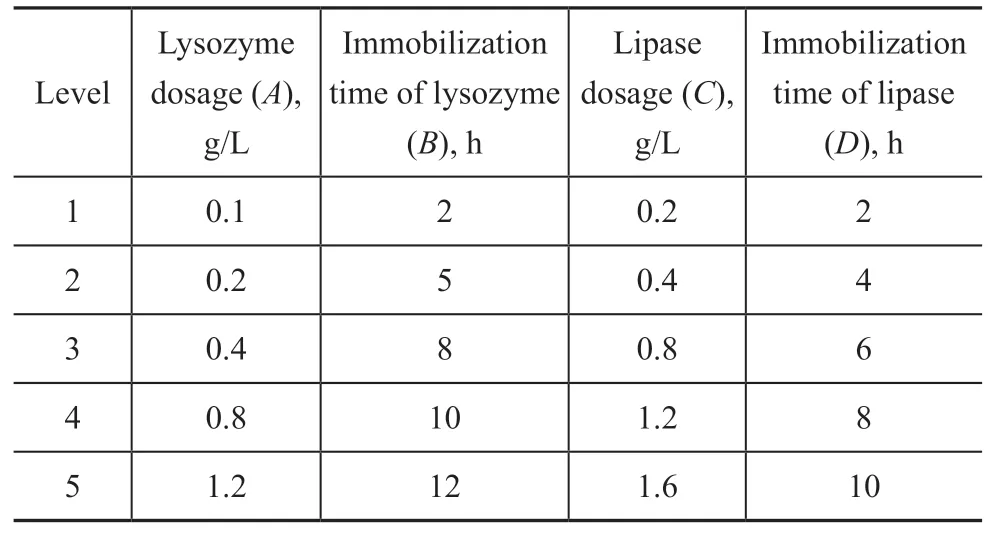
Table 1 Factors and levels of orthogonal experimental design
2.3 Preparation of immobilized bi-enzyme epoxy composite coating
To prepare the COOH-SBA-15/LZM-LP/EP coating,a certain amount of immobilized enzyme was put into the epoxy resin adhesive. By mechanical stirring and ultrasonic dispersion, it could achieve the purpose of uniform dispersion. Finally, the composite system was uniformly coated on the polished smooth surface of Q235 carbon steel and was cured at room temperature for 72 h, and finally the coating thickness was equal to 30―40 μm. In addition, to explore the effect of the amount of immobilized enzyme on the corrosion inhibition performance of composite coating, a series of epoxy composite coating with different COOHSBA-15/LZM-LP mass fractions (0.5%, 1%, 1.5%,2%, and 3%) were prepared by adjusting the amount of doped COOH-SBA-15/LZM-LP. And the resulting samples were labeled as (0.5%)COOH-SBA-15/LZMLP/EP, (1%)COOH-SBA-15/LZM-LP/EP, (1.5%)COOH-SBA-15/LZM-LP/EP, (2%)COOH-SBA-15/LZM-LP/EP, and (3%)COOH-SBA-15/LZM-LP/EP,respectively.
2.4 Electrochemical method for measuring corrosion inhibition performance
A saturated calomel electrode was used as the reference electrode (SCE), and a platinum wire electrode, 0.5 mm in diameter and 35 mm in length, was used as a counter electrode to study the corrosion behavior of a carbon steel coupon (with a corrosion area of 1 cm2)in circulating cooling water, the cooling water contained 312 mg/L of Cl-, 247 mg/L of SO42-, 85 mg/L of Ca2+, 41 mg/L of Mg2+, 361 mg/L of total alkalinity,373 mg/L of total hardness, with a pH value of 8.7 and a conductivity of 2784 μS/cm. First, the threeelectrode system was immersed in circulating cooling water for 1 h to obtain a stable open circuit potential(Eocp). Electrochemical impedance spectroscopy (EIS)measurements were made at a stable open circuit potential, plus a sinusoidal wave disturbance potential of 10 mV, in a range of 100 kHz to 10 mHz. The Tafel curve was measured at a stableEocpwith a scan rate of 0.001 V/s.
3 Results and Discussion
3.1 Corrosion inhibition performance of immobilized bi-enzymes
3.1.1 Optimization of immobilized bi-enzymes operating parameters
Four methods were selected to immobilize lysozyme and lipase on COOH-SBA-15. As shown in Figure 2, the activity of immobilized enzymes using COOH/SBA-15 as an carrier is significantly better than that with SBA-15,enzymatic activities of lysozyme and lipase in method (a)are high, so the lysozyme is immobilized first and then the lipase is immobilized to form the bi-enzyme. In order to determine the operating parameters of the optimal immobilization and obtain the highest corrosion inhibition performance, the concentration and immobilization time of the two enzymes were selected as variable parameters,respectively. The orthogonal experimental results are listed in Table 2, respectively.
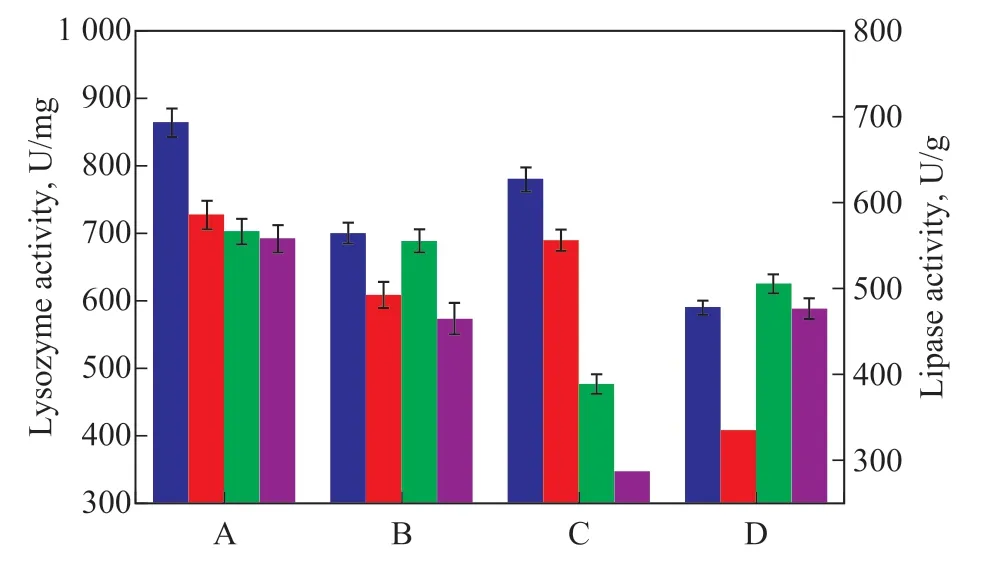
Figure 2 Enzyme activity under different methods of immobilizing
For Table 2, the maximum range can be found under the factor of immobilization time of lysozyme, indicating that it also has a critical influence on the corrosion inhibition reaction of COOH-SBA-15/LZM-LP. However, the auxiliary effects of lysozyme concentration, immobilization time of lipase and lipase concentration cannot be neglected.For each factor, by comparing and analyzing the main effect values at different levels, A1, B2, C3 and D5 were selected as the best experimental combinations.
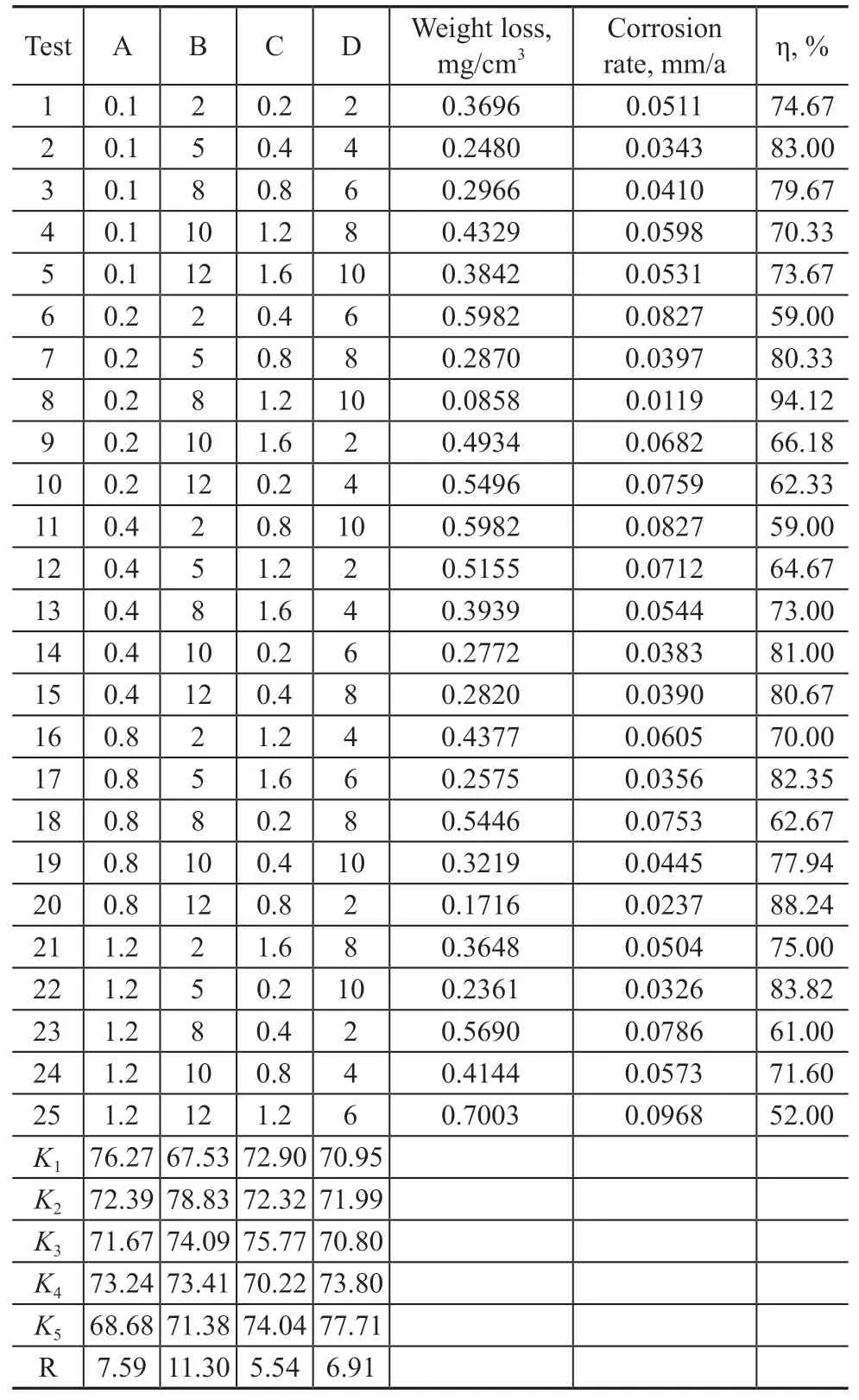
Table 2 Orthogonal experimental results of COOH-SBA-15/LZM-LP
3.1.2 Surface morphology analysis
Carbon steel coupons were immersed in circulating coolingwater containing 0.2 g/L of SBA-15, 0.2 g/L of COOH/SBA-15, and 0.2 g/L of COOH-SBA-15/LZM-LP, respectively,for 72 hours. Visual photos and SEM images of the corrosion products on the surface are shown in Figure 3.
It can be seen from Figure 3(a) and Figure 3(b) that the surface corrosion of the coupon is obvious after soaking in pure circulating cooling water. Figure 3(c)and Figure 3(d) show that the corrosion condition is weakened after adding SBA-15. This may be caused by the adsorption of SBA-15 on the surface of the carbon steel coupon which can prevent the corrosion of carbon steel by circulating cooling water, and a lot of corrosion products still appeared on the surface. From Figure 3(e)and Figure 3(f), it can be seen that the corrosion condition is further weakened after adding COOH/SBA-15, and the SEM images show that the corrosion products are reduced. This may be attributed to the carboxyl group which is ionized into -COO-in the solution. It can form complex with polyvalent metal ions such as Ca2+and Mg2+in the solution. At the same time, it can bind with Fe2+on the surface of the corroded metal and form on the metal surface a protective film to effectively prevent the development of corrosion[11]. The lightness of the original texture on the coupon surface also proves this statement.It can be seen from Figure 3(g) and Figure 3(h) that the carbon steel coupon is corroded slightly after the addition of COOH-SBA-15/LZM-LP, and the SEM image showsthat the pitting corrosion is not obvious, proving that the enzyme plays an anticorrosive effect.
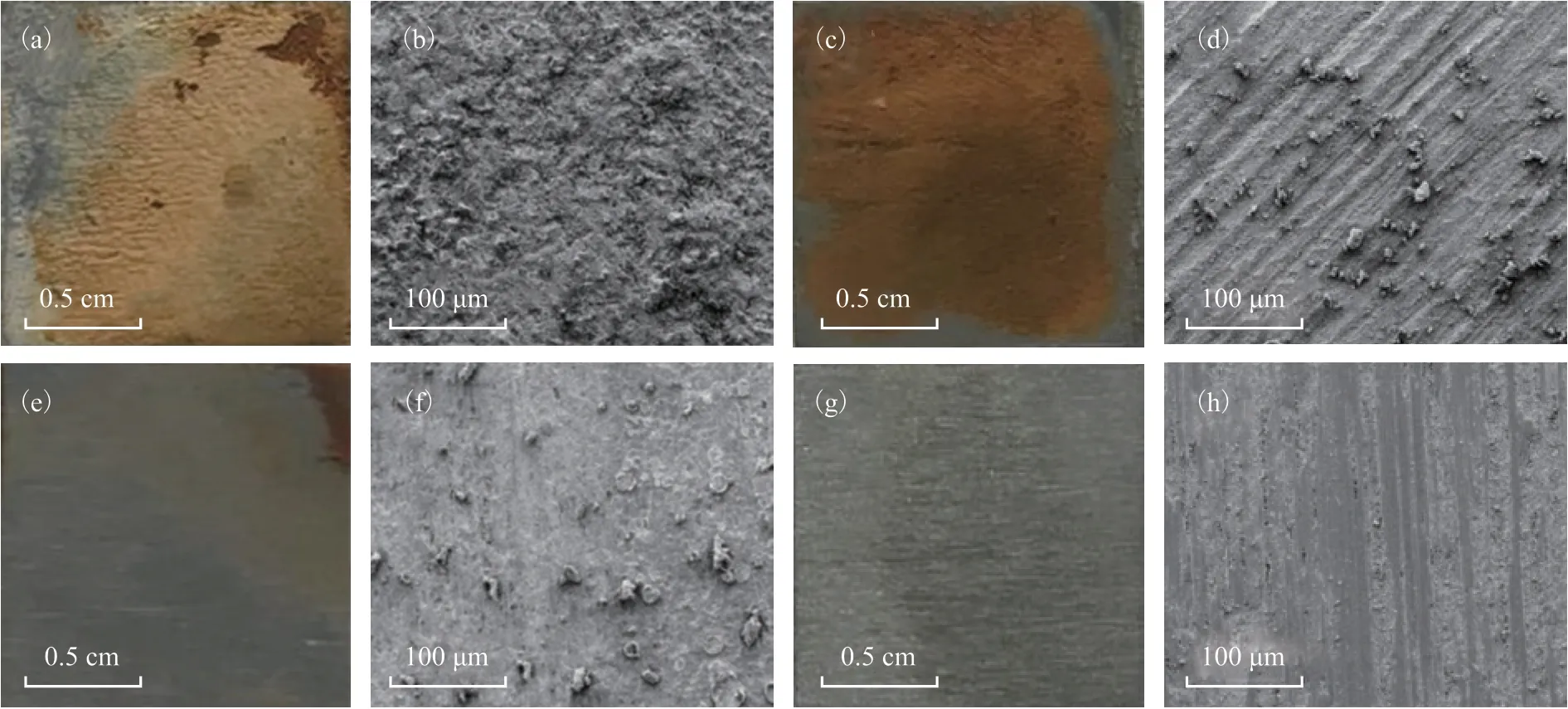
Figure 3 Visual photos and SEM images of the surface of carbon steel coupons after different soaking conditions. (a,b)blank; (c,d) SBA-15; (e,f) COOH/SBA-15; (g,h) COOH-SBA-15/LZM-LP
3.1.3 Electrochemical test
Q235 carbon steel coupons were immersed in circulating cooling water, and 0.2 g/L of SBA-15, COOH/SBA-15, and COOH-SBA-15/LZM-LP were respectively added to the circulating cooling water. And the electrochemical test could be operated when the carbon steel coupons were soaked for 1 h andEcopwas stabilized (Figure 4(a)). The obtained polarization curve is shown in Figure 4(b). Tafel fitting is performed on the curve, with the fitting result shown in Table 3. The inhibition efficiency η is calculated by Eq. (1).
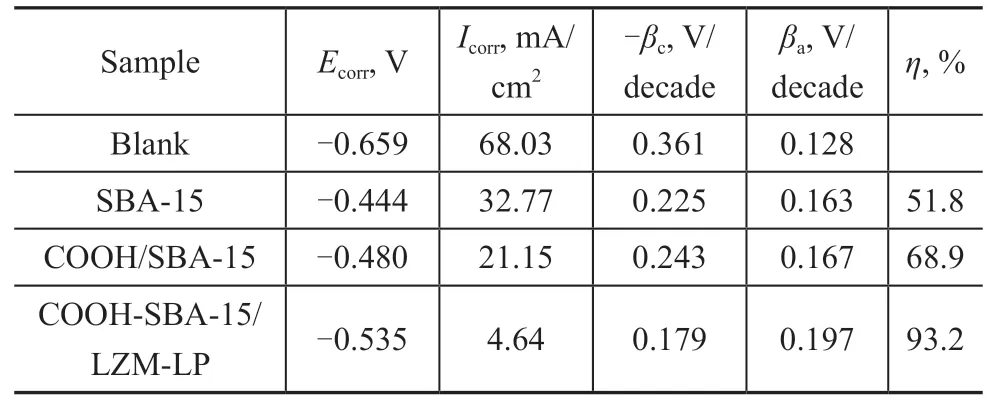
Table 3 Tafel fitting results of carbon steel coupons incirculating cooling water with and without inhibitory materials

whereI0corris the corrosion current density of the coupon in the pure circulating cooling water, andIcorris the corrosion current density of the coupon in circulating cooling water with the added inhibitory materials.
It can be concluded from Figure 4(b) and Table 3 that compared with the blank experiment, the addition of SBA-15 and COOH/SBA-15 can make the anode curve move significantly to the low current direction, which proves that the addition of these two inhibitory materials can significantly inhibit the anode metal dissolution reaction. The addition of COOH-SBA-15/LZM-LP can make the Tafel cathode and anode curves move to the direction of low current, which proves that COOHSBA-15/LZM-LP can inhibit both the anode metal dissolution reaction and the cathode hydrogen evolution reaction. The addition of three inhibitory materials can reduceIcorrand increaseEcorr, indicating that all three materials can inhibit corrosion by affecting the metal anode reaction[12]. The increase ofEcorrproves that the addition of carboxyl groups and enzymes has a certain inhibitory effect on the cathodic hydrogen evolution reaction. The change inEcorrall exceeds 85 mV, indicating that the three inhibitory materials all are anodic corrosion inhibitors[13].The addition of three inhibitory materials increases the anode Tafel slopeβaand the cathode Tafel slope-βc, proving that the addition of three inhibitory materials all changes the reaction kinetics of the cathode and anode simultaneously[14], COOH-SBA-15/LZMLP has the largest variation, proving that it has the most significant effect on the cathode and anode reactions.
Figure 4(c—e) shows that the Nyquist diagram of carbon steel in the blank solution contains only one compressed capacitive reactance arc. Only one time constant is found on the corresponding Bode diagram, indicating that the corrosion of carbon steel in the blank solution is mainly controlled by the charge transfer process[15]. After adding SBA-15, COOH/SBA-15, and COOH-SBA-15/LZMLP, respectively, to the circulating cooling water, there is a time constant at each of the high and low frequencies,which indicates that the presence of these three materials changes the corrosion mechanism. In general,the existence of the time constant at high frequencies can be attributed to the characteristics of the electric double layer during the electrochemical reaction, which corresponds to the degradation of the carbon steel matrix;the time constant in the low frequency region is related to the effect of pitting and corrosion products generated during the corrosion process[16]. The diameter of the Nyquist diagram becomes larger after adding materials to the circulating cooling water, which indicates that the electrochemical reaction resistance increases and the corrosion resistance improves[17]. This may occur because the material molecules are adsorbed on the surface of the coupon and a protective film is formed. The formation of the protective film can reduce the active surface area of the coupon, thereby enhancing the corrosion resistance of the coupon. Two different electrical equivalent circuit(EEC) models were used to fit the EIS data (Figure 4(f)and Figure 4(g)).
For the blank group experiment, the EIS data is fitted using the electrical equivalent circuit (EEC) of Figure 4(f),whereRsis the solution resistance and CPE is a constant phase element, which represents the corrosion product film capacitance, and its corresponding impedance can be calculated by Eq. (2).Rctis the charge transfer resistance.In this EEC, it can be approximately considered to be equal to the polarization resistanceRP. Generally speaking,RPcan be considered to be inversely proportional to the corrosion rate, so the corrosion inhibition rate can be calculated by Eq. (3). EEC in Figure 4(g) is used to fit the EIS data after the inhibitory material is added, where CPE1and R1represent the capacitance and resistance of the corrosion product film, CPE2andR2represent the electric double layer capacitance and charge transfer resistance, in this EEC, the polarization resistanceRPis the sum ofR1andR2[18]. Fitting data are shown in Table 4.

whereZCPEis the impedance of CPE, Ω·cm2;Y0is the initial admittance of CPE, μΩ-1/cm2·Sn;ωis the angular frequency (ω= 2πf); j is the imaginary unit (j2= -1) ;nisa factor that varies between 0―1,and whenn= 1, CPE is an ideal capacitor.RP0andRPrepresent suppressed and unsuppressed polarization resistance, respectively.It can be found from the data listed in Table 4 that theRPvalue increased after the addition of inhibitory materials,indicating that the addition of inhibitory materials reduces the corrosion rate of carbon steel coupons. In general, a lowerY0means that the adsorption film formed on the surface of the test material is denser[19], which indicates that COOH-SBA-15/LZM-LP has higher corrosion inhibition performance and higher stability.

Table 4 EIS fitting results of carbon steel coupons in circulating cooling water with and without inhibitory materials
3.1.5 Inhibition mechanism
Figure 5 shows the inhibition mechanism of COOHSBA-15/LZM-LP on carbon steel in circulating cooling water. The circulating cooling water contains a large amount of Cl-ions, and a large amount of oxygen is mixed during the circulating flow. The main component of the carbon steel coupon is iron. Generally, when the carbon steel coupon is just immersed in the circulating cooling water, iron can fully contact with O2and Clions. At this time, iron is the anode and O2is the cathode.
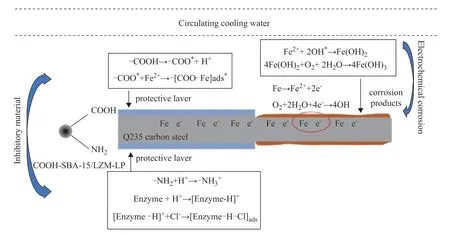
Figure 5 Inhibition mechanism of COOH-SBA-15/LZM-LP on carbon steels in circulating cooling water

Figure 6 (a,b,c) Nyquist and Bode diagrams of epoxy coating and COOH-SBA-15/LZM-LP/EP composite coating in circulating cooling water, (d) Equivalent circuit diagram of COOH-SBA-15/LZM-LP/EP in circulating cooling water
The reactions in Eq. (7) and (8) occur, and the corrosion product Fe2O3is formed. However, this corrosion product is porous and sparse, which cannot effectively protect the coupon and will cause the corrosion reaction to continue[20]. If O2is excessive, Fe2+will be further oxidized to Fe(OH)3, and reactions of Eq. (9) and Eq. (10)will occur.

When the carboxyl group is introduced into the inhibitory material, the carboxyl group undergoes a hydrolysis reaction in the circulating cooling water. The generated-COO-can chelate with the Fe2+on the surface of the coupon, forming a stable chelate to cover the surface of the coupon, thereby inhibiting corrosion.

After adding lipase and lysozyme to the inhibitory material,because the nature of the enzyme is a protein composed of amino acids, there is a large number of amino and carboxyl groups in the structure. Hydrolysis of the carboxyl group will change the circulating cooling water from weakly alkaline to neutral. At this time, the amino protonation reaction will generate -NH3+[21], which will cause the enzyme to be positively charged. Because Cl-ion has the characteristics of small particle radius and strong penetrating ability, the electric double layer structure at the interface between the coupon and the corrosion product film will preferentially adsorb Cl-ions, thereby generating excessive negative charges on the metal surface and accelerating metal corrosion. At this time, the positively charged enzyme can adsorb with each other on the metal surface due to electrostatic interaction, forming a protective layer, thereby slowing the metal corrosion[22].

3.2 Corrosion resistance of COOH-SBA-15/LZMLP/EP
COOH-SBA-15/LZM-LP has excellent corrosion inhibition performance, but direct addition will lead to rapid decline of corrosion inhibition performance with the flow of circulating cooling water, discharge of concentrated water and the addition of new water, and it is not easy to recover and easily cause the waste. COOHSBA-15/LZM-LP is mixed into epoxy resin to prepare a composite coating, and a composite antibacterial coating is formed on the surface of carbon steel by brush coating,which not only has excellent anti-corrosion performance,but still can greatly increase the action time.
EIS data of the epoxy resin coating includes a time constant, the equivalent circuit diagram shown in Figure 4(g) can still be used for fitting. Among them, CPEfand CPEdlrespectively represent the coating capacitance and the electric double layer capacitance of the coating/substrate interface, andRfandRctrepresent the coating resistance and the charge transfer resistance, respectively.After doping COOH-SBA-15/LZM-LP into epoxy resin,a significant increase in impedance height is observed from Figure 6(a). It can be seen from Figure 6(c) that the peak of the maximum phase angle is obviously widened,and there is a trend of new peak produced between 1 Hz and 100 Hz[22]. This may be related to the incomplete dispersion of COOH-SBA-15/LZM-LP in the epoxy resin,so the EEC shown in Figure 6(d) needs to be used for simulation. Among them, CPEc, CPEfand CPEdlrepresent the outer layer capacitance of the coating, the coating capacitance and the electric double layer capacitance of the coating / substrate interface, andRc,RfandRctrepresent the outer layer resistance, the coating resistance and the charge transfer resistance, respectively. The fitting results are shown in Table 5.
It can be seen from Figure 6(a―d) and Table 6 that the doping of COOH-SBA-15/LZM-LP significantly increased theRP, which proves that COOH-SBA-15/LZMLP can significantly enhance the corrosion resistance of epoxy resin. Due to the rigidity of the added inhibitory materials, a dense network structure forms between the organic phase of epoxy resin and the inhibitory materials,which can help improve the hardness of the epoxy coatings (Figure 7(a)) and increase the abrasion resistance of the epoxy coatings and other mechanical strength. At the same time, an appropriate amount of COOH-SBA-15/LZM-LP can also fill the pores gap inside the epoxy coating, improving the coating compactness. As shown in Figure 7(b), COOH-SBA-15/LZM-LP can improve the adhesion grade of the epoxy coatings. When the dosage is 0.5%―3.0%, the adhesion grade of the epoxy coatings increases from 2 to 1, indicating that addition of a certain amount of COOH-SBA-15/LZM-LP can enhance the adhesion strength between coatings and carbon steels.
With the increase of the COOH-SBA-15/LZM-LP doping amount, the RP value increases first and then decreases. This is because when the COOH-SBA-15/LZM-LP content is low, the COOH-SBA-15/LZM-LP dispersion is relatively uniform in epoxy resin (Figure 7(c)). With the further increase of the mass fraction, COOH-SBA-15/LZM-LP reaches saturation in the epoxy resin, and the excess COOH-SBA-15/LZM-LP can form agglomerates which cannot be evenly distributed in the epoxy resin(Figure 7(d)), resulting in the appearance of coatings pores and the decreased density and hardness of the coatings, thus reducing the corrosion resistance. With the increase of the mass fraction, the trend showing that Y0decreases first and then increases can also confirm this view[19]. Therefore, in this work, the coating with the best corrosion resistance is composed of 1.5% of COOHSBA-15/LZM-LP / EP.
Figure 8 shows EIS spectra of carbon steel coated with (1.5%)COOH-SBA-15/LZM-LP / EP immersed in circulating cooling water for 24 h, 72 h, 168 h, 360 h, and 720 h,respectively. The relevant fitting data are shown in Table 6.It can be seen from the data in Figure 8 and Table 6 that after 360 hours of immersion, the corrosion inhibition rate is only decreased from 99.56% to 99.47%, which is less than 0.1%. As the immersion time continues to increase,due to the increase in the amount of immobilized enzymes and the infiltration of circulating cooling water, the pores of the coating continue to increase and microcracks may occur at the same time. Along with the hydrogen evolution reaction, small bubbles are generated insidethe coating, which can reduce the adhesion between the coating and the carbon steel coupon. When the immersiontime reaches 720 h, the corrosion inhibition rate decreases to 99.33%, which is a 0.23% decrease.
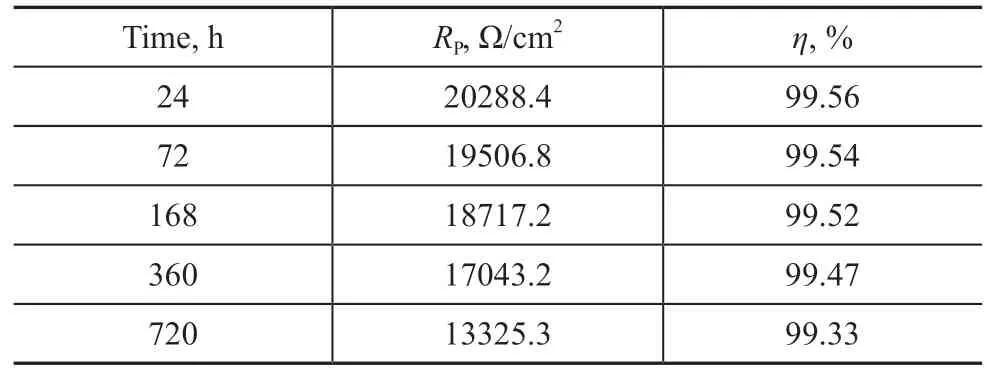
Table 6 EIS data fitting results of (1.5%) COOH-SBA-15/LZM-LP / EP in different immersion time in circulating cooling water

Figure 7 (a) Effects of the amount of COOH-SBA-15/LZM-LP on the pencil hardness of epoxy coatings, (b) Effects of the amount of COOH-SBA-15/LZM-LP on the adhesion grade of epoxy coatings, (c) SEM image of COOH-SBA-15/LZM-LP, (d)COOH-SBA-15/LZM-LP agglomerates in epoxy resin
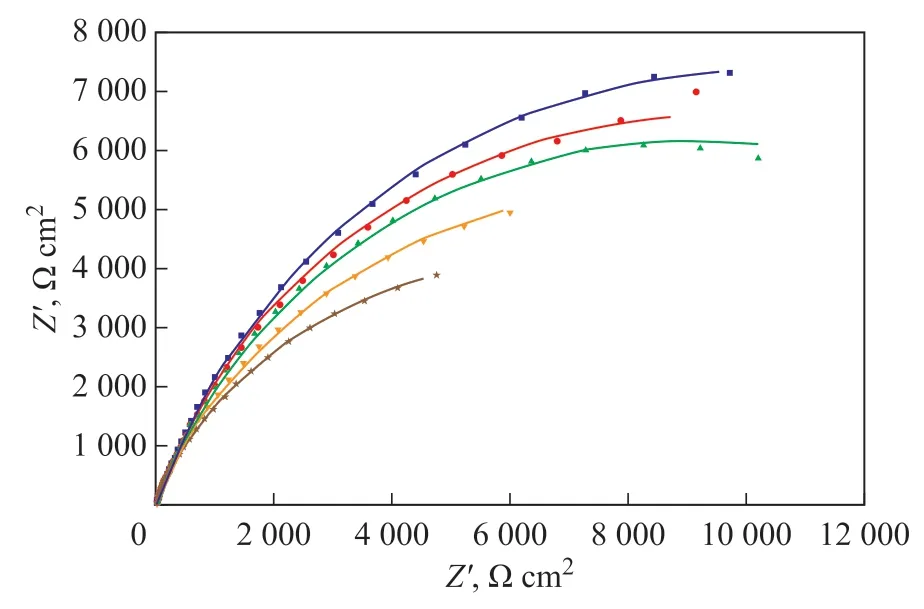
Figure 8 Nyquist diagram of (1.5%) COOH-SBA-15/LZMLP / EP in different immersion time in circulating cooling water

Table 5 EIS data fitting results of epoxy resin coating and COOH-SBA-15/LZM-LP / EP composite coating in circulating cooling water
4 Conclusions
(1) COOH-SBA-15/LZM-LP has a good inhibitory effect on the corrosion of carbon steel coupons in circulating cooling water. The optimal immobilization scheme is determined through orthogonal experiments:The concentration of lysozyme is 0.1 g/L, and the immobilization time of lysozyme is 5 h, the concentration of lipase is 0.8 g/L, and the immobilization time of lipase is 10 h, respectively.
(2) COOH-SBA-15/LZM-LP can be adsorbed on the surface of carbon steel coupons to form a dense protective film, which can suppress the anodic metal dissolution reaction and cathodic hydrogen evolution reaction. At the same time, it can also use the bactericidal effect of lysozyme to reduce microbial corrosion.
(3) (1.5%) COOH-SBA-15/LZM-LP/EP coating has good durability, and its corrosion resistance decreases only 0.23% after soaking for 720 hours.
Acknowledgment:Thanks to the support of the Shandong Provincial Natural Science Foundation (ZR2017MEM013) for this research.
杂志排行
中国炼油与石油化工的其它文章
- Effect of Acidity on Methylation of Benzene with Methanol Catalyzed by HZSM-5: A DFT Study
- Study on Reducing Injection Pressure of Low Permeability Reservoirs Characterized by High Temperature and High Salinity
- Heat Transfer and Kinetics Study of Moroccan Oil Shale Pyrolysis Process
- Application of a New Catalyst Deactivation Model for Residue Hydrotreating
- High-efficiency Extraction of Bitumen from Oil Sands Using Mixture of Ionic Liquid [Emim][BF4] and Dichloromethane
- Heat Exchanger Network Retrofit of Diesel Hydrotreating Unit Using Pinch Analysis
